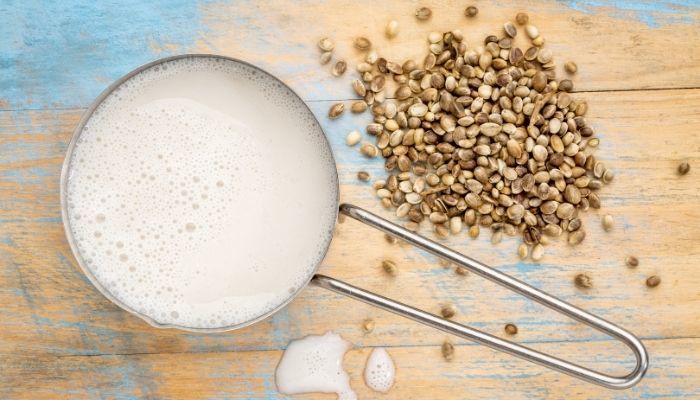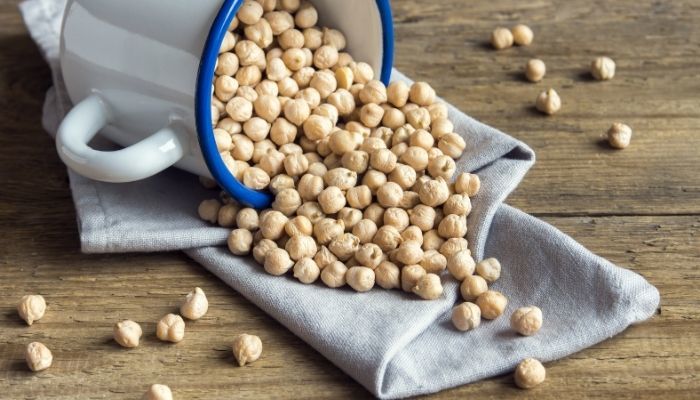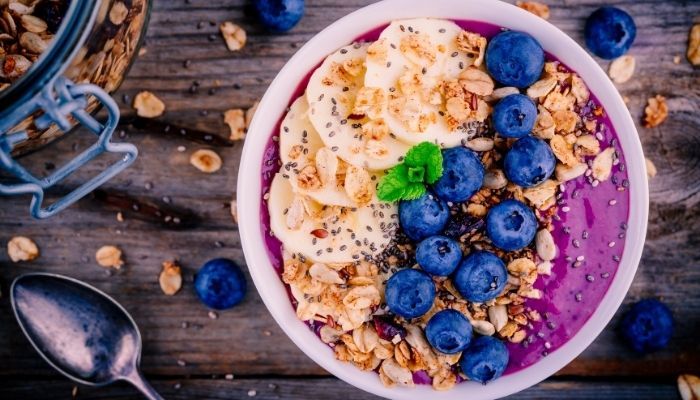Food trends: What’s In and What’s Out?
Chickpeas or coconuts? Almonds or adaptogens? Discover which health foods and trends are starting to make a dent in the market – and which ones have passed their ‘best-before’ date.
Tracking food trends can be a fickle business. One day a health food might find itself as the hottest Instagram-worthy offering and the next, it’s been sidelined for something more on trend.
Example? Quinoa. Just when we’d finally worked out how to say it properly, the United Nations General Assembly declared 2013 as the ‘International Year of Quinoa’ and the rest is history. But fast forward seven years and while quinoa is still jam-packed with the same health-giving nutrients it always was, the fierce love affair consumers once had with it has fizzled somewhat.
Find out what’s in and out right now.
WHAT’S IN
- Hemp milk
Hemp-based foods and ingredients were finally declared legal in Australia in 2017. Since then, everything from hemp-seed oil to whole hemp seeds and even hemp kombucha have hit the shelves. But on the back of milk alternatives making such a splash, hemp milk is likely to be the next big thing, particularly for those avoiding dairy, nuts and soy. Plus, it’s rich in healthy polyunsaturated fats, contains more protein than some nut milks and doesn’t separate when added to hot drinks. Proof that it’s on the rise is the fact that online orders for hemp milk have more than doubled since the beginning of 2020 in the UK.

- Upcycled foods
There’s not only a war on food waste in Australia, food producers are now keen to go one step further – turning food waste created from manufacturing products into new products. In other words, making something out of what would otherwise be nothing. ‘Upcycled foods’ have been named by US supermarket giant Whole Foods Market as one of its top 10 food predictions for 2021 and brands on this side of the world are already making it happen. For example, Australia’s AquaBotanical makes bottled water from the production of fruit juice, and New Zealand-based Upcycled Grain Project uses discarded grain from beer brewing to create health-focused snack foods.
- Alternative ‘butters’
We know almond butter has given peanut butter a red-hot run for its money. But according to food forecasters, there’s a new crop of plant-based butters about to gain traction – and some of them even tick the upcycled-food trend box. Meet watermelon seed butter. Made with peeled watermelon seeds that would otherwise be discarded, they’re ground into a smooth butter that has a creamy taste and is packed full of calcium, magnesium, phosphorous, iron and potassium. Other butters to look out for include macadamia butter and chickpea butter.
- Chickpeas
Speaking of chickpeas, with the ever-increasing push towards all things plant-based, you can expect them to make their presence felt in a much bigger way. It’s another prediction made by Whole Foods Market, but think beyond the hummus and falafel we already know well. On top of chickpea butter, chickpea flour will become more mainstream, while chickpea tofu and even chickpea cereal will make an entrance.

5. Adaptogens
The food and supplement aisles in grocery stores are likely to blur even more over the coming months as products packed with functional ingredients become staples. Thanks to COVID-19, consumer interest in products delivering health benefits has never been higher, and a key ingredient will be adaptogens. Research-backed as natural remedies for stress and immunity, adaptogens include well-known herbs like turmeric, ginseng and astragalus. Rather than a single adaptogen being added to a latte or taken as a tablet, the emerging trend is for adaptogen blends to be crafted into powders and tonics, which can be added to smoothies and drinks.
WHAT’S OUT
- Coconut water
This refreshing drink burst onto the scene a couple of years ago. Since then, expert research has revealed that some of its associated health claims – such as that it rehydrates better than water – don’t stack up. Plus, consumers now know that while it’s lower in sugar than other juices, it still delivers quite a hit of kilojoules compared with a glass of water. The decline in sales and popularity is a big part of the reason Coca-Cola recently announced it’s pulling out of the coconut-water market.
- Sourdough
At the height of the coronavirus pandemic, it was hard to look at your social media feed without seeing someone’s DIY sourdough loaf. And according to a bunch of behavioural scientists, there was a good reason for that: baking bread is genuinely cathartic. Plus, given sourdough’s fermented element, it satisfied the growing interest in gut health, too. But given its lockdown connection, it may be that consumers are keen to move onto fresh dough pastures this year.

- Almond milk
The reputation of what was once the nut milk of choice for many has taken a hit in recent times. Reports suggest it requires an exponential amount of water to produce compared with other dairy-free milks, and it’s thought to harm bee populations. Australian-made almond milks have perhaps unfairly been lumped into the same basket, but regardless, almond milk’s time in the sun is fading.
- Acai bowls
They’re the photogenic breakfast bowls made from nutrient-dense acai powder or puree blended with milk and topped with everything from extra fruit, nuts, seeds and even granola. But on top of falling victim to overexposure on social media, they can be significantly high in kilojoules and added sugar (depending on the ingredients used), which means they’ve lost their shine for the health-conscious consumer.

- Kale
It’s the leafy green that once epitomised all things healthy. As folklore has it, its journey towards superfood status started when Gwyneth Paltrow labelled it as her go-to food and shared her recipe for kale chips. Since then, it’s been revealed that while kale is healthy, it only comes in at number 15 on a scale devised by a US research team to rank foods based on their nutrient content. Watercress, spinach, parsley and even some types of lettuce all rank higher. The real proof kale’s popularity is on the decline is that Google trend searches for the once superhero green started nosediving as early as 2019. Chickpea chips, anyone?
Find the latest natural and organic food products to hit the market and browse the Naturally Good Product Directory.
Do you produce natural and organic food products? List your business today and be sure to get them in front of key retail buyers.
-
Get your FREE ticket
- REGISTER FOR FREE
